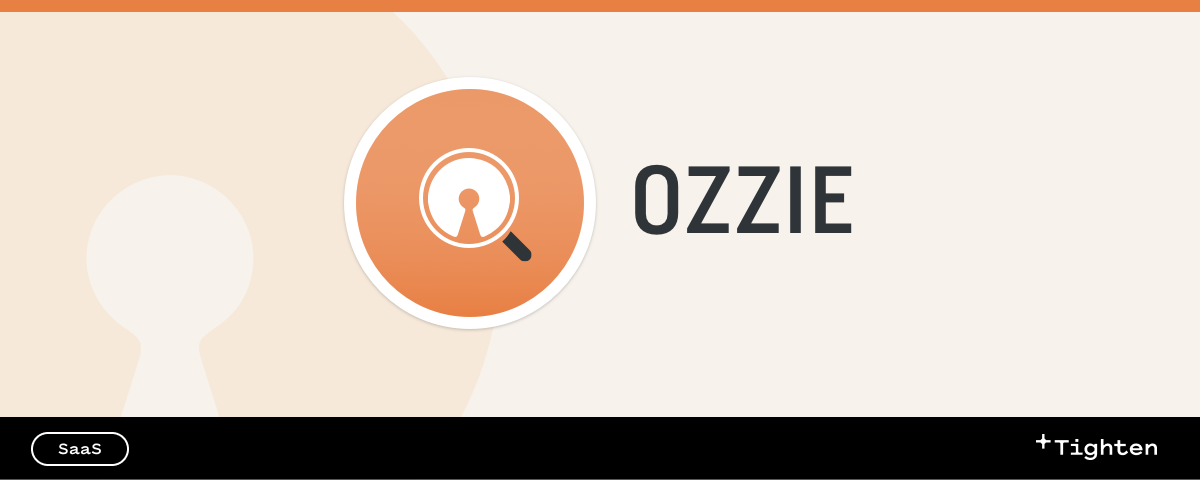Ozzie is Tighten's open source projects monitor. Each project is assigned a "debt score" based on how many open issues/PRs there are, and how old they are.
- Clone the repo (
git clone git@github.com:tighten/ozzie.git && cd ozzie) - Install dependencies (
composer install && npm install) - Run
valet secureto usehttpsfor the local domain - Update
APP_URLin.envto use your local valet TLD. By default, it will usehttps://ozzie.test - Create a GitHub OAuth Application. If you use Valet to serve your application locally, you can use the following settings:
- Application Name:
Local Ozzie - Homepage URL:
https://ozzie.test - Application Description:
Local Version of Ozzie - Authorization Callback URL:
http://ozzie.test/auth/callback
- Application Name:
- Copy the example
.envfile:cp .env.example .envand modify its settings to match your local install, including the client ID and secret from the previous step - Run
php artisan key:generate - Create a database (by default
.envlooks for one namedozzie) and run the migrations (php artisan migrate) - Fetch the projects list (into the database) by using the
projects:fetchcommand. Alternatively, you can seed yourprojectstable using aprojects.jsonfile at the root of the project (see below for more info). - Fetch all projects' stats for the first time using
stats:fetch
Note: If you're not using a tool like Laravel Valet, run
php artisan serveand visit your site at http://127.0.0.1:8000; you'll also want to modify your GitHub app settings to use http://127.0.0.1:8000 instead of http://ozzie.test
If you'd like to seed projects manually, you can do so using the projects.json file in your app root. If you don't create one, the system will fall back to projects.json.dist, which also serves as a helpful template for you to create your own projects.json file.
Here's what the structure of the file looks like:
[
{
"name": "ziggy",
"namespace": "tighten",
"packagist": "tightenco/ziggy",
"maintainers": [
"mattstauffer"
]
},
]Each project in this file will need its GitHub namespace, the GitHub project name, and the GitHub usernames of all of its maintainers.
Using the GitHub API, new public repos added to the organization will be added automatically (checked daily) through the projects:fetch command.
If you're doing it manually, any changes to projects needs to happen in projects.json first. Migrating and seeding tables fresh will update the projects table with the new info, and the next call of php artisan stats:fetch will re-populate project stats.
- Make a change to
projects.json - Re-run the seeder:
php artisan db:seed - Fetch all project stats:
php artisan stats:fetch
Every time the php artisan stats:snapshot command is run, it captures the scores for each project (for historical comparison).
If you're using the scheduler, it'll already be scheduled to run every day (see the docs for how to set up the scheduler cron job).
By default, re-running the command on the same day will not update the day's existing snapshots. To override this behavior, use the -f flag, which will both create any missing snapshots for the day and update all existing snapshots for the day.
php artisan stats:snapshot -fUse Vite to automatically compile JS/CSS on save:
npm run devThis project uses Duster to fix PHP, Prettier to fix JS, and StyleLint to lint & fix CSS.
To automatically fix PHP:
composer fixTo automatically fix JS:
npm run fix-jsTo automatically fix CSS:
npm run fix-cssPlease see CONTRIBUTING for details.
The MIT License (MIT). Please see LICENSE for details.
